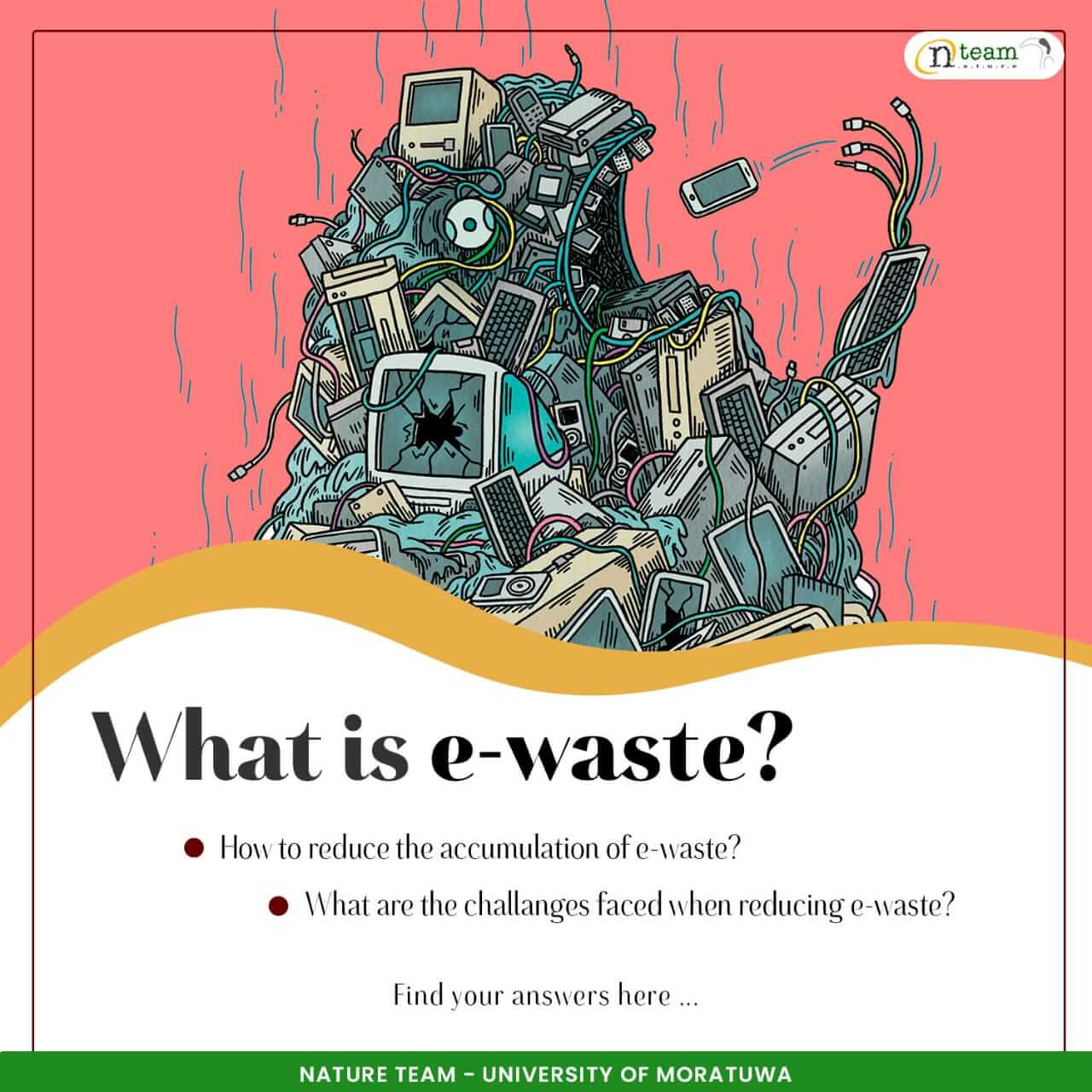What is E-waste?

"First you listen to your heart. Second, find the heart of Mother Nature and listen to it. You will feel how sensitive the environment is to us."
E-waste, or electronic waste, is made when an electronic item is disposed of after the conclusion of its useful life. The rapid advancement of technology and the utilization-driven society are brought about by the generation of a massive amount of e-waste.
E-waste contains a list of chemicals that are harmful to people and the environment, like mercury, lead, beryllium, brominated fire retardants, and cadmium, i.e., stuff that sounds as terrible as it is. When electronics are misused and transferred, these chemicals end up in our soil, water, and air. To make things more regrettable, electronic waste is now and then illicitly traded to nations that don not have laws on taking care of and arranging it. Once there, it is dumped. Now and then, profitable materials are recovered, but frequently under risky working conditions.
The self-evident solution to this has been reusing, which takes the parts inside electronics, even the broken ones, which still have value, and makes them accessible for modern products. However, reusing rates for e-waste remain persistently low, which is why proponents of reusing are doing everything they can to educate people about the long-term natural and economic benefits of the approach. There are really exceptional simple ways that all of us can help decrease e-waste, which is particularly imperative at a time when our ever-growing dependence on electronics has driven e-waste to become the biggest developing waste stream around the world. Furthermore, strategies for reducing e-waste should include an awareness of your personal security: specifically, making sure you erase all personal data from your electronic device, so it does not fall into the wrong hands.
The challenge of reducing e-waste is something that everyone should be aware of and commit to. It begins with understanding why we don’t need our utilized electronics continuously streaming into community landfills. Electronic waste is characterized as being disposed of by electrical or electronic devices that can lead to human and environmental damage if they get put in landfills. These devices contain poisonous chemicals like mercury and lead, and whereas they are secure to utilize, once they get put in a landfill, those poisons can leak out into the soil and water, sullying both. In the event that those poisons get into your drinking water at that point, that presents a health hazard for you and your family. And usually there are no minor challenges. As innovation advances and continues to move forward our hardware, giving us motivations to induce the liberation of our current models for the most recent one, there has been a proclivity to fairly discard these items. As a result, e-waste has become a worldwide problem.
Reducing e-waste is not about dispensing with those environmental dangers. Minimizing e-waste also helps us moderate assets and reduces the energy we need to make these products; reusing parts inside e-waste consumes considerably less vitality than making unused ones. We can also help reduce the cost of unused shopper merchandise by reusing parts to create new products. Typically, a distant less costly recommendation for producers than having to go mining for the virgin minerals to form modern metals. This means that the fetch of making an unused smartphone, or any other electronic gadget, goes down once producers are able to get to the parts they require from the reusing industry. So usually a win-win suggestion all around. The challenge, of course, is that not enough people know that e-waste can be reused.
That is why one of the most potent and effective ways to learn how to reduce e-waste is to help spread the word about recycling. If you already reuse your e-waste, that's fantastic; you're doing your part to help reduce waste. Presently, it’s time to take the next step and share your information with other people—family, friends, neighbors, and coworkers—who may not be mindful of the hazards that e-waste poses. If you have a family member or friend who has a new smartphone or portable workstation or simply plans on organizing their old ones, talk to them about almost reusing it with an experienced recycling organization like Great Lakes Gadgets Organization, which can make the parts inside them accessible to modern clients and manufacturers.
